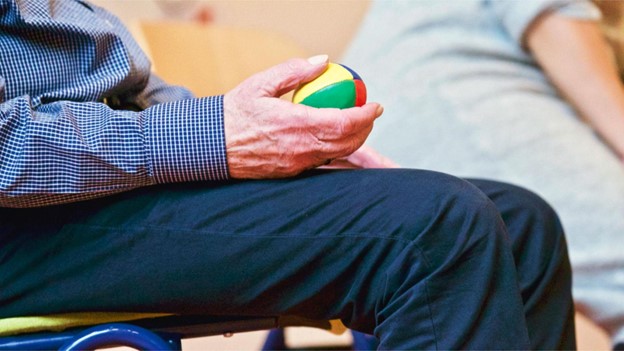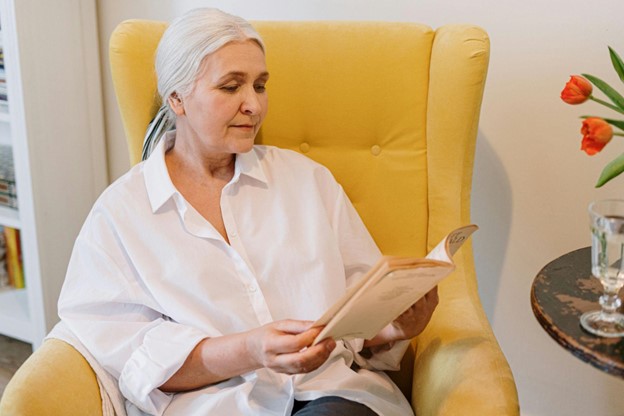





Licensed and Certified by the California Department of Health Care Services, License #330053AP
Copyright © 2024 California Behavioral Health · 37066 Bankside Dr, Cathedral City, CA 92234 · Privacy Policy
Chronic pain is a common challenge for seniors, whether it stems from chronic conditions or past injuries. For years, opioids were the standard solution for pain relief. However, this class of medicines carries serious risks for those in recovery from addiction. Even when prescribed responsibly, opioids can be highly addictive, making them a risky choice for seniors.

From physical therapy and alternative treatments to lifestyle changes and non-addictive medications, seniors have various options that support pain relief and long-term well-being. This guide explores opioid-free pain management strategies designed to help seniors maintain their sobriety while still finding relief.
Every person experiences pain differently, but seniors often experience it for the same reasons. Here are the most likely culprits for chronic pain:
Providers will often prescribe opioids for chronic pain. However, this prescription comes with serious risks for older adults. Seniors may need higher doses over time to get the same relief, which can lead to dependency or addiction. Even when used as directed, opioids can slow thinking, cause confusion, and impair decision-making. They also affect balance and coordination, which can cause seniors to fall and seriously injure themselves. On top of that, opioids can interact dangerously with other medications seniors commonly take, like those for blood pressure or anxiety.
For seniors in recovery, choosing non-opioid solutions isn’t just about avoiding addiction — it’s about protecting their independence and quality of life.
Even a short-term opioid prescription can spark cravings and increase the risk of relapse. That’s why working with a healthcare provider who understands both pain management and addiction is so important. A doctor can craft a plan tailored to a senior’s medical history, past substance use, and current mental health conditions.
There are plenty of recovery-friendly options to help seniors manage pain while staying sober:
Instead of automatically prescribing opioids, providers who take a holistic approach can help seniors take control of their pain while staying committed to their sobriety.
Living with chronic pain can feel lonely, but having the right people in your corner can make all the difference. Support groups are a great place to start. Research shows that peer-led support groups can significantly reduce reliance on opioids for chronic pain management. Groups like SMART Recovery and Alcoholics Anonymous (AA) often have meetings specifically for people dealing with both chronic pain and addiction. Local senior centers often host workshops on pain management, gentle yoga classes, or mindfulness sessions. For those who can’t get out as easily, online communities like Chronic Pain Anonymous (CPA) or In the Rooms offer connection and support from home.
Professional assistance is crucial in managing chronic pain and addiction recovery. The National Council on Aging (NCOA) offers the Chronic Pain Self-Management Program. This interactive workshop equips older adults with skills to manage pain through exercise, healthy eating, and cognitive strategies. This program can increase participants’ knowledge of pain management and reduce pain levels.
Similarly, the Substance Abuse and Mental Health Services Administration (SAMHSA) provides resources if you’re managing chronic pain but also have a history of substance use disorders. Their guide, Managing Chronic Pain in Adults With or in Recovery From Substance Use Disorders, offers comprehensive strategies for healthcare providers to address both chronic pain and addiction simultaneously.
And let’s not forget the role of family and caregivers. They’re the ones who can nudge you to keep up with doctor’s appointments, help you stay active with gentle exercises, or even just sit with you during a tough day. They’re also there to notice when things feel overwhelming and remind you it’s okay to ask for help. With a mix of peer support, professional guidance, and the love of family, seniors can tackle chronic pain without losing sight of their independence or hard-won sobriety.

To find relief for chronic pain, first talk to your doctor. Ask about non-opioid pain relief options, such as physical therapy, lifestyle changes, or alternative treatments like acupuncture and massage. Be upfront about your history with addiction and your commitment to avoiding opioids so your doctor can tailor a treatment plan that aligns with your needs.
Advocating for holistic and medication-free approaches takes confidence, but asking the right questions can help. If your doctor suggests medication, ask about non-opioid alternatives and potential risks. Bring up complementary therapies like cognitive behavioral therapy (CBT) or mindfulness-based stress reduction, which can help manage pain without medication. If you feel unheard, consider seeking a second opinion from a doctor who better understands your goals.
Finding a doctor who specializes in addiction-informed pain management can make all the difference. Pain specialists, geriatricians, and recovery-friendly primary care providers understand how to balance pain relief with sobriety. Use resources like SAMHSA or local recovery groups to find a provider who prioritizes safe, non-opioid treatment options.
Managing chronic pain without opioids requires strategies that address both physical discomfort and overall well-being. For seniors, finding safe and effective ways to stay active can significantly improve mobility and independence.
Regular movement is one of the most effective ways to manage chronic pain without opioids. Physical therapy can improve flexibility, strengthen muscles, and correct posture, reducing strain on joints and nerves. Work with a senior-friendly physical therapist who can develop a personalized plan with exercises that match your abilities and limitations. Low-impact exercises like yoga and tai chi promote balance and joint mobility, while swimming or water aerobics provide resistance training without putting pressure on joints. If standing is difficult, chair yoga or seated stretching routines can help maintain mobility without overexertion. Committing to a daily movement routine, even if it’s just a short walk, can gradually improve pain levels and overall well-being.
Seniors have a variety of non-opioid pain relief options. NSAIDs (like ibuprofen or naproxen) help with inflammation-related pain, while acetaminophen is a gentler option for those with stomach sensitivity. Topical treatments, such as lidocaine patches and capsaicin cream, provide localized relief for arthritis and nerve pain. Alternative therapies like acupuncture stimulate nerve pathways to release natural painkillers, while massages can relieve any tension you have in your muscles and improve your circulation. Natural supplements like turmeric and magnesium may also provide relief because of their anti-inflammatory and relaxation properties, while omega-3s can benefit your joint health. Always consult your doctor before adding new supplements to your regimen.
Pain isn’t just physical — your mindset and stress levels can influence how intense it feels. Cognitive Behavioral Therapy (CBT) helps reframe negative thought patterns that can worsen pain perception, while mindfulness techniques can reduce stress-related tension. Guided imagery, where you visualize soothing scenes, can also train your brain to focus on comfort instead of discomfort. To integrate these techniques into daily life, start with five minutes of deep breathing or meditation each morning and increase gradually. Social activities, hobbies, or support groups can also provide emotional relief, making pain more manageable.
Managing chronic pain goes beyond medical treatments. It requires small, consistent changes in daily habits and environment. For example, creating a comfortable home, improving sleep, and staying active can help reduce pain and improve quality of life. These practical strategies can make everyday tasks easier while supporting long-term pain relief.
A few adjustments to your home setup can significantly ease the strain on your body. Ergonomic furniture — such as cushioned chairs with lumbar support and adjustable beds — helps maintain good posture and reduce muscle tension. Assistive tools, like jar openers, reachers, and voice-activated devices, can make daily tasks easier on your joints. Heat and cold therapy can provide relief — use heating pads or warm baths to soothe stiff muscles, while ice packs help reduce inflammation. Rearranging frequently used items to reduce bending and reaching and adding grab bars in the bathroom can enhance safety and comfort.
Quality sleep is essential for pain control, but discomfort often makes rest difficult. A consistent sleep routine — going to bed and waking up at the same time — can help regulate your body’s natural rhythm. Creating a cool, dark, and quiet environment, using supportive pillows, and limiting screen time before bed can also improve sleep quality. If pain keeps you awake, adjust your sleep position to relieve pressure on sore areas. For example, if you sleep on your back, place a pillow underneath your knees for back pain. If you’re a side sleeper, place the pillow between your knees to align your spine. A doctor or sleep specialist may offer additional non-medication strategies if sleep issues persist.
Daily movement is key to managing pain, but overexertion can lead to setbacks. Gentle activities, such as stretching in the morning or taking short walks, help maintain mobility without causing strain. Pacing yourself by breaking tasks into smaller steps and taking regular breaks prevents flare-ups. Tracking progress — such as noting how long you can walk before discomfort starts — helps you recognize improvements over time and set realistic goals. Staying engaged in hobbies, social events, and light household activities also supports mental and emotional well-being while reinforcing independence.

Managing chronic pain without opioids isn’t just about pain relief — it’s about protecting independence, staying engaged in life, and avoiding the risks that come with dependency. For seniors, the ability to move freely, connect with others, and think clearly is everything. Choosing safer pain management strategies means not just feeling better today but maintaining the freedom to live on your own terms for years to come.
Call Us 24/7
(888) 355-1676